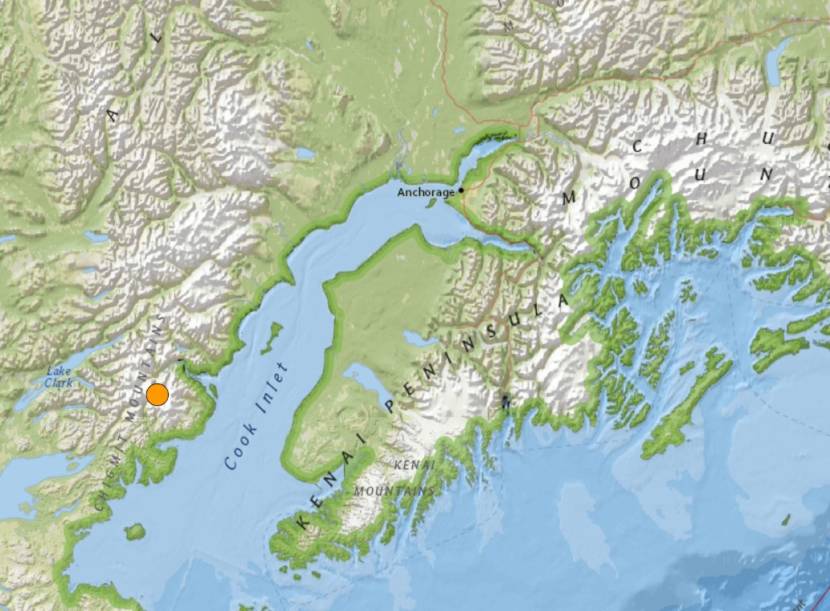
A 5.9-magnitude earthquake centered in Lake Clark National Park shook the Kenai Peninsula and Southcentral Alaska Tuesday at about 1:40 p.m.
The epicenter of the quake was about 7 miles northwest of Mount Iliamna, across Cook Inlet from Ninilchik. That’s according to the U.S. Geological Survey.
Alex Farrell, a scientific developer with the Alaska Earthquake Center in Fairbanks, said this quake is “moderate” by the center’s standards.
“This is not the largest earthquake of the year but it is definitely significant,” said Farrell.
Farrell said there are no reports of damage so far. She said that’s likely because the earthquake was 95 miles deep and far from a population center. In contrast, the 2018 Anchorage earthquake was less than 30 miles deep.
Many of the messages sent to the USGS “Did You Feel It?” map come from the western Kenai Peninsula and Anchorage and report “light” shaking.” Farrell says the strongest reports came up from the Homer area. As of Tuesday afternoon, there were reports as far north as Fairbanks and as far south as Kodiak.
Ashlyn O’Hara was working at her office in Kenai when the earthquake hit.
“I was sitting at my desk and could feel the rumbling in my chair,” she said. “And we have string lights hanging up in our office so I looked around my computer and those were swinging back and forth.”
O’Hara’s from Southern California and has done her fair share of earthquake drills. She dropped and covered under her desk.
“I’ve felt earthquakes before, but in terms of one that stick out in terms of being really strong, I think this is probably the second one where I could feel it and notice it,” she said.
She said the quake lasted long enough for her to take out her phone and start recording while she was under her desk.
Farrell said a tsunami is not expected. But there is a possibility for aftershocks.
“Usually an earthquake of this size is going to have some aftershocks,” she said. “You’ll tend to have more aftershocks closer in time, and then as you get further away in time from when the earthquake occurred, you’ll get fewer and fewer aftershocks.”
